The uninterrupted green expanses, enhanced by the famous brightness of the Lusitanian sky, had accompanied them for miles. And immediately reserved a familiar and reassuring welcome for their eyes, trained from childhood to recognize citrus trees and figs, omnipresent in the soils of their grandparents on the island of Ischia.
 The landscape of this other southern land, the Algarve, had given Anna and Alessandro the feeling of being on the right path as they approached the small village of the Serra. It took them a while to locate it, after other trips and inspections without the expected outcome. But how could that, a place with a record number of distilleries, not be the right place?
The landscape of this other southern land, the Algarve, had given Anna and Alessandro the feeling of being on the right path as they approached the small village of the Serra. It took them a while to locate it, after other trips and inspections without the expected outcome. But how could that, a place with a record number of distilleries, not be the right place?
Anna and Alessandro, with the same surname - Buono - but without being relatives, began travelling when, immediately after graduating from high school, they left the mother island to create professionalism and perspectives on the "continent". With her degree in architecture and his studies in economics related to tourism and history, they took any growth opportunities offered, in their respective fields, around Europe. And, without knowing each other, they had stopped in parallel, for several years at each stage, in London and Spain, carrying on their dreams and their careers. Then Anna moved to Lisbon, to an architectural studio dedicated to the recovery of ancient buildings and Alessandro returned to Ischia to follow the family restaurant business. And right on the island of return, at a New Year's party, they had to meet and find each other. To start making common life projects, merging their experiences, knowledge and the desire to get involved acquired separately.
The beginning together was in Lisbon, in the centre of Portugal where Alessandro, linked by familiarity to the culture of wine, took interest in particular spirits. Thanks to their cultural baggage of scents, memories and stories related to the processing of grapes and fruits of the Ischitan countryside and to the narration of their grandparents, an idea was gradually taking shape, which soon became a project and a need shared with Anna: a new journey, with a strong cultural connotation, in search of original makings in limited territories and with a strong identity. Obviously, related to the products of the earth. Portuguese, but also Ischitan. Like the fig, so widespread in both, yet almost absent in liqueurs. Almost, because someone used it in Portugal instead. And that research, after some unsuccessful exploration, had directed the two curious young people to the south, to Serra Algarvia.
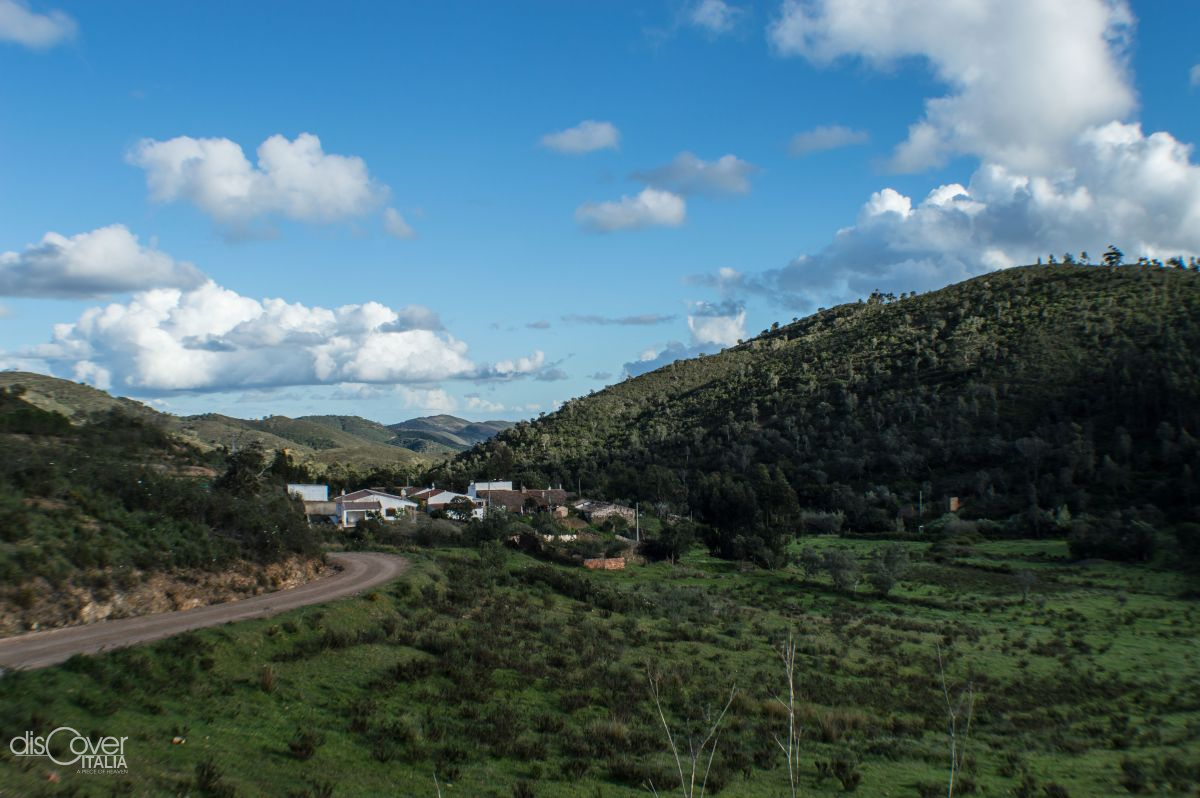
 The meeting with Don Luis
The meeting with Don Luis
"We found important references about this village, where in the 19th century the inhabitants welcomed foreigners by offering acquavite (brandy) made with figs - tell the Buonos - It is incredible how with just twelve resident families there were nine distilleries. It could only be a useful destination for what we were looking for ». La Serra, not far from the sea, was magnificent with its dense woods. In the almost depopulated village, eight distilleries had also disappeared. In carrying on the ancient tradition, only Don Luis resisted, with a production reserved to few customers.
"It was a decisive meeting for us - explains Anna - He understood what we were planning to do and showed us his stock of liqueurs, his hand-made wooden alembic, according to an expertise handed down for generations, like the whole distillation process. Now advanced in years, he was waiting for the opportunity to enhance the work of a lifetime and we immediately found ourselves at ease, sure that this was the beginning of our journey ".
Don Luis' “secret” was the particularity Alessandro had been thinking off for some time: a distillate obtained from the fermentation of the fig as an alcoholic base. «He taught me every stage of fig processing, which is very delicate, because it is a fruit that easily deteriorates both fresh and dry. And always from Luis I learned the techniques of distillation, handed down for centuries in their country. For this reason, in 2016, when we got married, the Distillerie Aragonesi project was born, to identify realities that are keepers of ancient and representative traditions of a territory that risks to disappear and to spread the knowledge of their products, which is the only way to keep them alive and pass them on over time “.
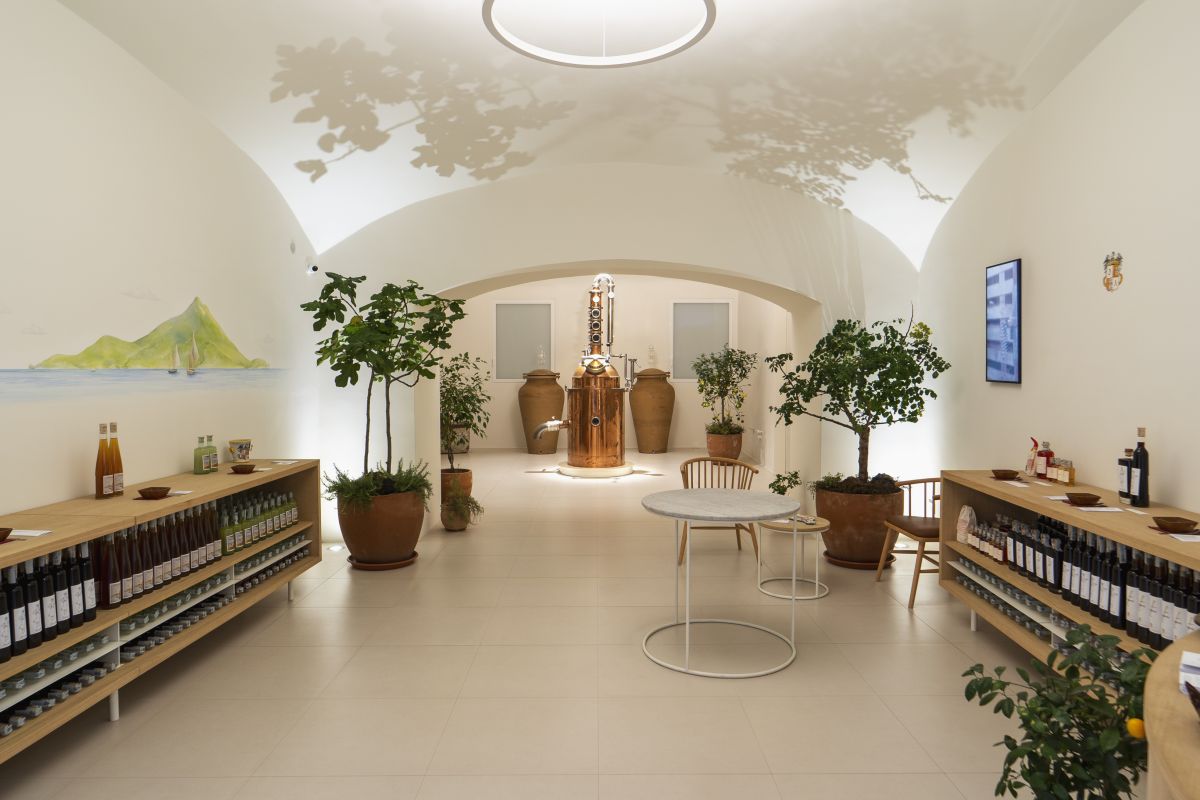
Don Luis's fig liqueur deserved to be known far beyond the village and region of origin. Anna and Alessandro enhanced its value and identity by giving it a name, Figaro, and designing a label and a bottle simple and elegant. Then, they worked hard to present it in Europe. "We have identified the best hotels, restaurants and bars at the top - Anna remembers with a smile - and we went in person to meet the owners proposing ourselves with great simplicity, but very determined, because we knew we had a product of the highest quality and with a history . We found a great willingness to listen and then a great interest, immediately after the tastings. Our Figaro, unique and produced with great passion by Don Luis, is now present in about fifteen starred restaurants, in the bars of the largest hotels in Italy, England and Portugal. And we continue to work to make it known ».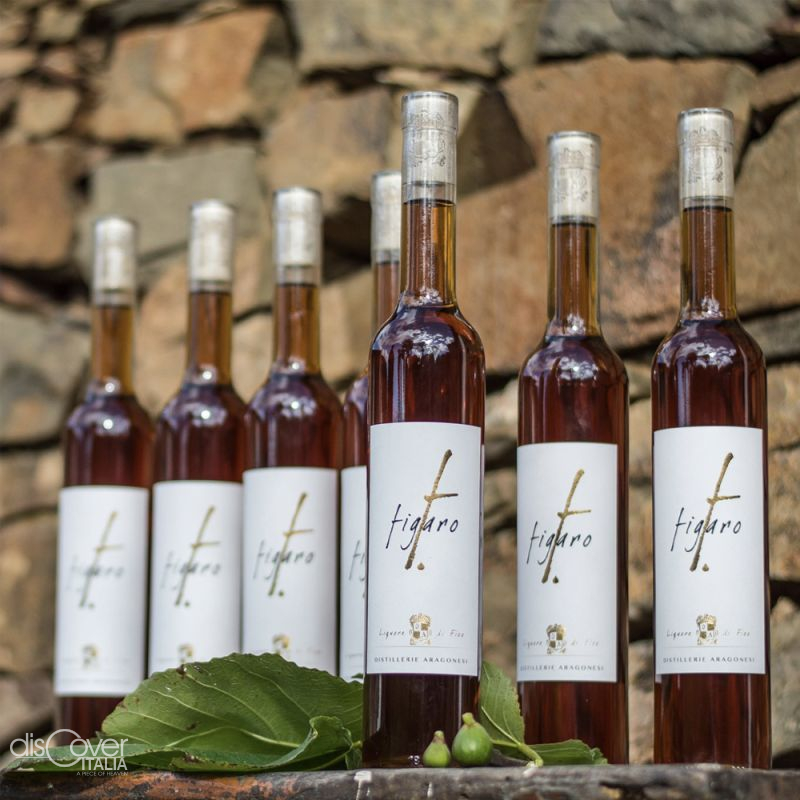

Others have joined to the chapter of Figaro. «After the meeting with Luis - tells Alessandro - we couldn't help wondering how many other small, precious realities existed in the Mediterranean area and are on the verge of being lost forever. Our research is oriented towards this, guaranteed by the cultural heritage that belongs to us due to our origins and which we recognize in many other areas of the Mediterranean, although each has its own particularities ".
Distillerie Aragonesi is a project dedicated to the Mediterranean, its climate, its farming traditions, its scents and flavors. That common matrix that Anna and Alessandro already perceived in front of the expanse of orange groves dotted with figs and carob trees encountered in the Algarve. How not to think to the orange-colored apples, to the figs, to the increasingly rare carob trees of the Ischian lands? «Until I left Ischia to study - says Alessandro - I spent a lot of time with my grandparents, I grew up with them. To my maternal grandmother, Maddalena Pisani, from Casamicciola, I owe a large part of the family cultural baggage that I brought to the Distillerie. Many stories, which at the time I was listening casually, came back to me when we embarked on this path ».
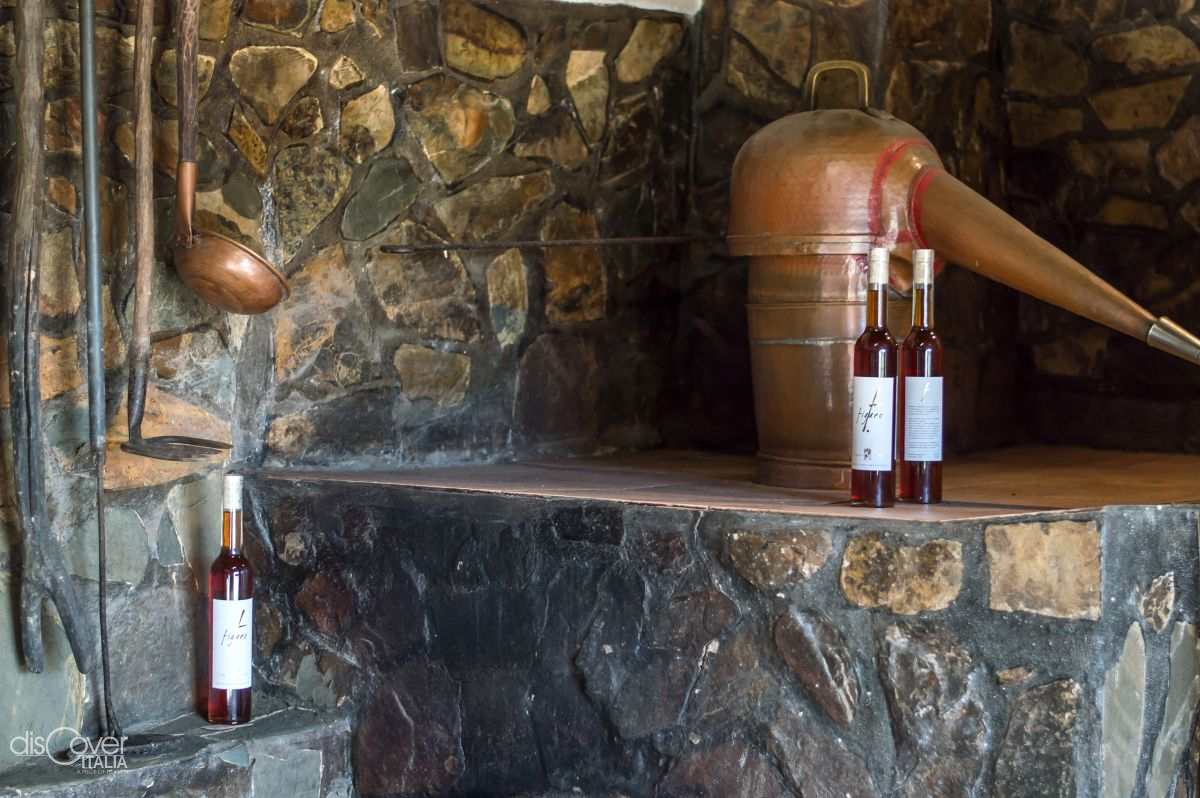 Distillation in the ancient palace of Ischia Ponte
Distillation in the ancient palace of Ischia Ponte
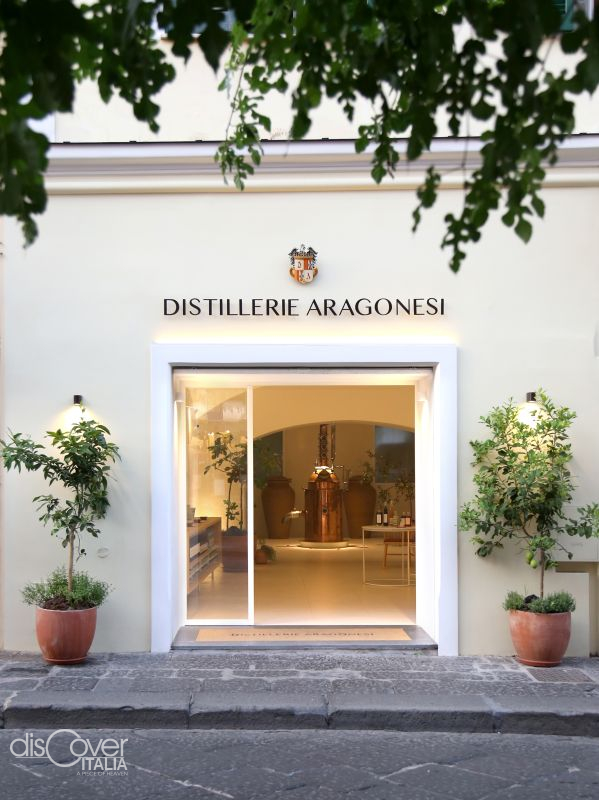
Anna and Alessandro always had the idea of returning to Ischia. And, after years abroad, it was the new work and life project that brought them back to us. The goal to recover traditional spirits, to give a future to ancient knowledge, couldn’t leave out the land of origin. «Also here in Ischia people distilled, homemade - explains Alessandro - but then those knowledge have been lost, such as the ability to build basic alembics. Considering the great production of wine, that was used as an alcoholic base for infusions. And that's what I chose to do too: use quality wine to distill alcohol ".
Besides seeking and enhancing rare and niche productions of others, in fact, Alessandro has decided to put to good use what he learned over the years, also thanks to Don Luis, and to personally dedicate himself to the rebirth of distillation on the island. And to underline the cultural link with the territory and the diversity of his project, with Anna they decided to set up the business in the ancient hamlet of Ischia Ponte, where once artisanal activities also flourished. Thus, the large room of one of the 18th century buildings rising on the sea side, on the land that at the time belonged to the nearby Augustinian convent, has become the heart of Distillerie Aragonesi. A unique project aimed to the recovery of the tangible and intangible heritage represented by the peasant culture of the island.
Anna's professional experience was decisive in creating a bright, welcoming environment, with attention to every detail of its simplicity. Dominated by a large copper alembic, clearly visible also from the street, which the central location indicates it as the care of the activity. It will be there that the most delicate and characteristic part of wine distillation will soon take place. In full view of visitors and those who will observe from the outside. The large terracotta amphorae where the fermentation of fruits and leaves will take place telling the over twenty-nine centuries old wine history of Ischia. And then there is the underground part, the most valuable, discovered once the work had begun: the cistern dug into the rock which in ancient times guaranteed the rainwater reserve to the warehouses and the houses above. Anna restored it with rigor and passion: "It will be here, in ideal natural conditions, that our spirits will age, we are now researching barrels and woods to find the best solution”.
Carobs and Purtualli

Meanwhile, in Figaro, the innovations resulting from Alessandro's study and expertise have been added. All linked to ancient fruits. Like the carob, «which - he says - was being lost, despite being a fruit with important properties and characteristics. We are mapping the plants, to choose the best ones to take fruits and leaves from for our spirits ». Two liqueurs are dedicated to the carob: 'On Carrubo, a carob amaro with strongly evocative hints of citrus fruits, annurca apples and gentian roots, and 'a Sciuscella, the dialect name of the fruit, a delicate liqueur that recovers the ancient practice of the caulara, the tradition of "enriching" the must with the sugary intake of carob, quince or figs.
Then there is Frescura, a fresh liqueur made from citrus fruits, fig leaves and Mediterranean herbs. The two young lovers tasting it in the shade of a tree with Sant’Angelo in the background are the poetic essence of what this alcoholic creation wants to communicate. «On Carrubo and Sciuscella, as well as Frescura - explains Alessandro - are infused in a distillate of wine. This means that alcohol is extracted from grape wine, rather than from cereals, by distillation. In addition to being a fundamental step to guarantee the quality of the liqueur and its craftsmanship, we understood that this was the real origin of the Ischitan liqueurs, the cultural, historical and gastronomic root from which we had to start again, together with the carob "


Dulcis in fundo, there is Purtuall ', a fortified wine made with oranges, which is a tribute to the island of Ischia and to Portugal from which it all began. If sweet oranges in Neapolitan are called "purtualli" and similar are the definitions in the majority of Italian dialects and in many languages of Mediterranean countries, it’s because the Portuguese in the 15th century had the exclusive right to trade with the East and, therefore , importing and marketing in the Mediterranean also of oranges, then an exotic fruit of distant lands. Then, they became a common cultivation throughout the Mare Nostrum, an integral part of our landscape, of our peasant and gastronomic culture, but for a long time it was the Portuguese ships that supplied the Aragonese Naples.
On the right wall of the Aragonese Distillery, in Ischia Ponte, a beautiful painting by Marco Cecchi depicts the Castle and the coast of Ischia with Portuguese sailing ships carrying the fragrant cargo of citrus fruits in the hold. On the opposite wall, a map of the Mediterranean basin by the same artist is placed, research area for spirits and their traditions to be rediscovered and saved. The "quest" of Distillerie Aragonesi summarized by art. The rest, the fundamental part, is done by the passion, enthusiasm and preparation of two young people who are convinced that the future and the new cannot be separated from keeping alive the roots of the history of the territories and the past of the communities.
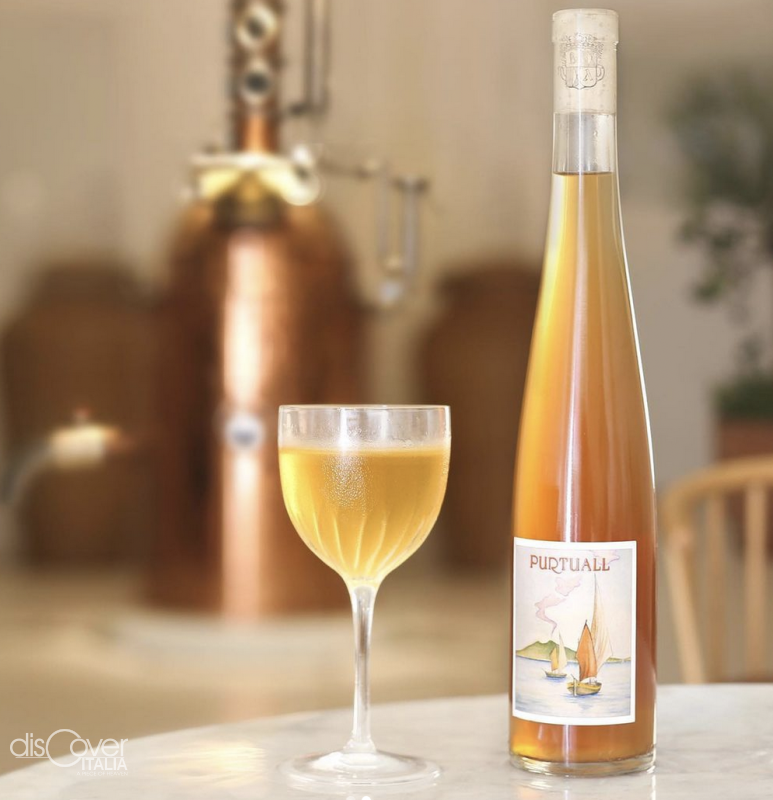

Copyright video, foto e testi ©️ 2020




Comments powered by CComment